Spectrograph Analysis of Tungsten
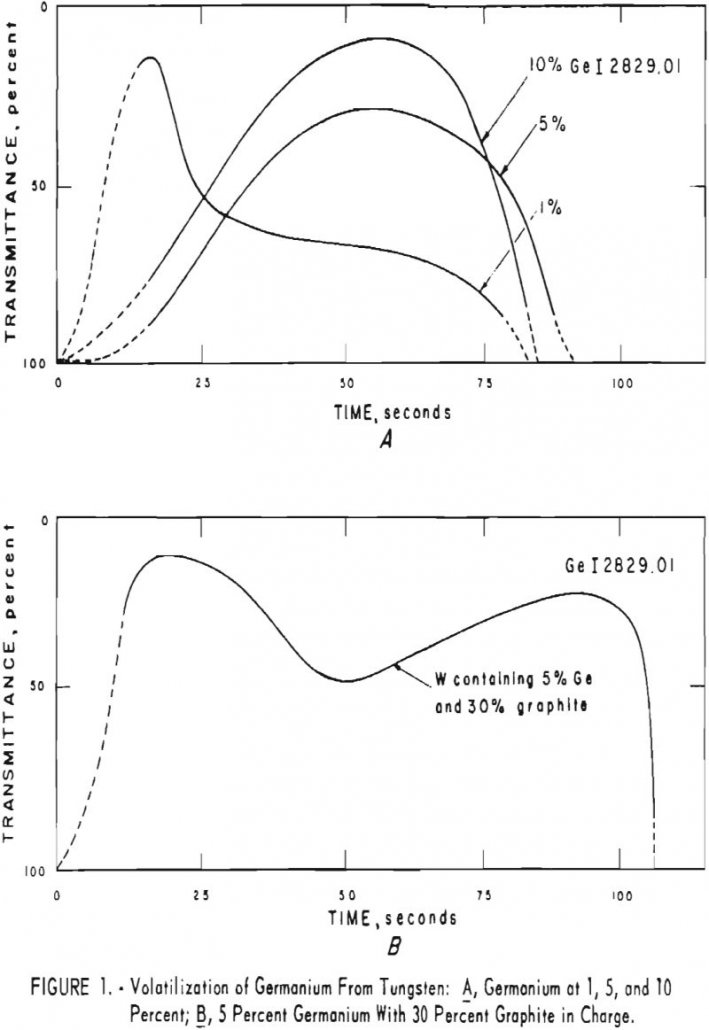
One of the main advantages of this method for estimating impurities in tungsten is that the analysis is performed on the metal. Ideally, samples and standards should be of the same particle size, between 200- and 300-mesh but satisfactory semiquantitative analyses can be made on particles as coarse as 30-mesh. Another advantage is the low […]
Phosphorus Pentoxide Content Determination Method

The precipitate method described herein is advantageous because of its rapidity and relative simplicity. This method eliminates the standardization of reagents, second filtration, washing of precipitate, and dissolving of ammonium phosphomolybdate precipitate, all of which are required in the titration step of the usual alkalimetric method. The precipitate method does not approach the accuracy of […]
Determination of Lithium In Lithium Minerals

A simplified, routine method for determining lithium in lithium-bearing rock is presented. The sample is decomposed by repeated treatments with nitric, hydrofluoric, and perchloric acids. Since this procedure does not appreciably dissolve beryl, interference by beryllium (the principal interfering cation) is minimized for most samples. The salts are brought into solution with water and enough […]
Spectrophotometry Determination of Copper in Tungsten Metal Powder

A spectrophotometry method for the determination of small amounts of copper in tungsten metal powder using the principle of solvent extraction has been developed. The metallic sample is dissolved in hydrogen peroxide, tartaric acid added, the pH adjusted, and the excess peroxide destroyed by boiling. Copper is reduced to the cuprous state, and the reagent […]
Radioisotopes Applications
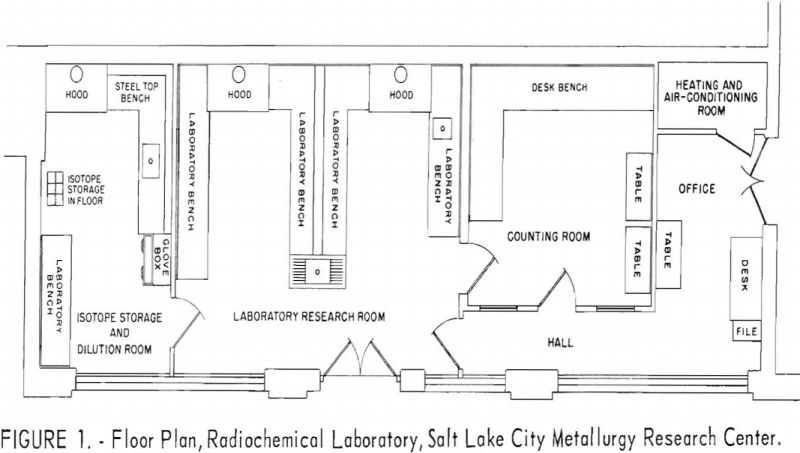
Many factors contributed to the decision to build a radiochemical laboratory at the Salt Lake City Metallurgy Research Center to investigate the application of radioactive isotopes and chemical compounds in extractive metallurgy. These reasons included the notable success achieved in biological sciences with radioisotopes, the development of reliable instruments and methods for identifying the isotopes […]
How to Determine Trace Impurities in Helium
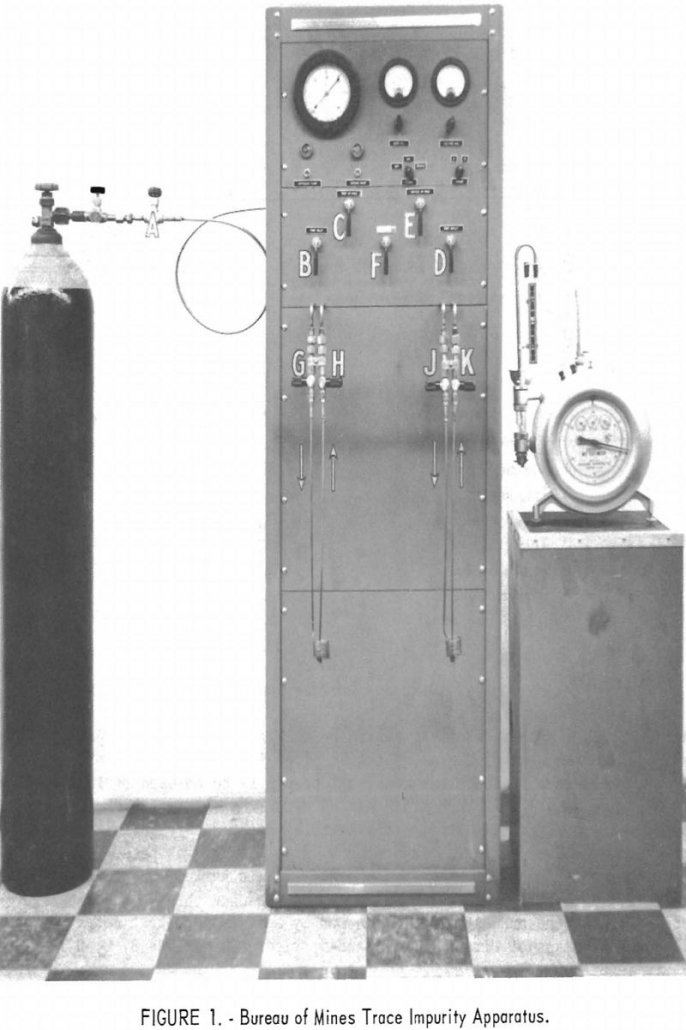
An apparatus for determining trace impurities in Grade-A helium by mass spectrometer methods was designed and built by the Federal Bureau of Mines. Grade-A is the designation for helium commercially produced by the Bureau. Its nominal purity is 99.995 percent. The device, following a suggestion by Deaton, concentrates the impurities in the helium by freezing […]
Detecting Rubidium and Cesium

A semi-quantitative test for the presence and identification of cesium and rubidium in rocks, clays, and mineral waters has been developed by the Bureau of Mines. The test can be used in the field, as a guide for the prospector, geologist, or mining engineer engaged in location or development work. It comprises two simple spot […]
How to Analyze Titanium Metal – Assaying

The results of investigative work on chemical, optical emission spectrochemical, and X-ray spectrographic methods were presented. Of the two chemical methods studied, the iron reduction method is superior in both time required for an analysis and in the detection limit, and the precision is quite satisfactory for the concentration and impurity range studied. The optical […]
Determining Lime Magnesia and Titania in Slags
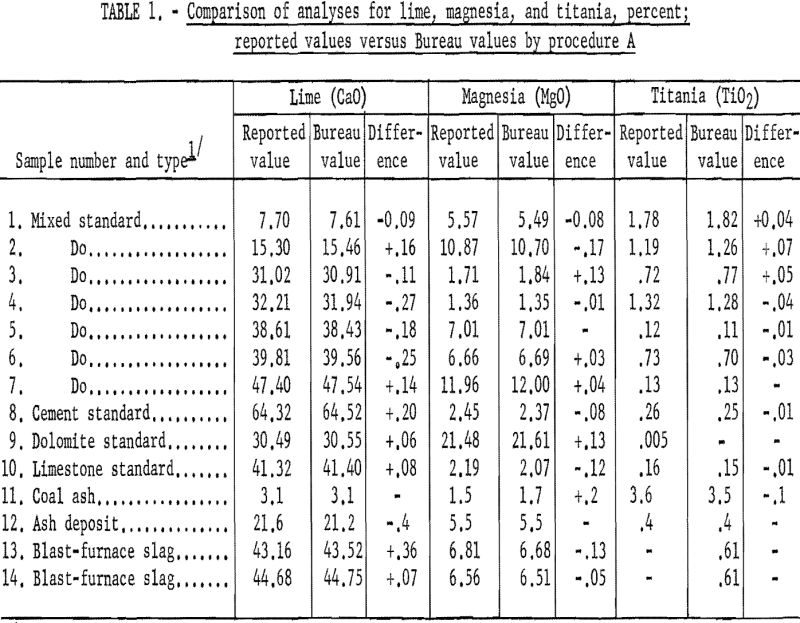
Standard methods of analysis for calcium and magnesium are involved and time consuming and generally require considerable analytical skill. Investigation of possible alternatives more suitable for rapid routine application led to a procedure developed for the rapid determination of calcium, magnesium, and iron in limestone, in which these cations are determined by a series of […]
Boron Crystallography
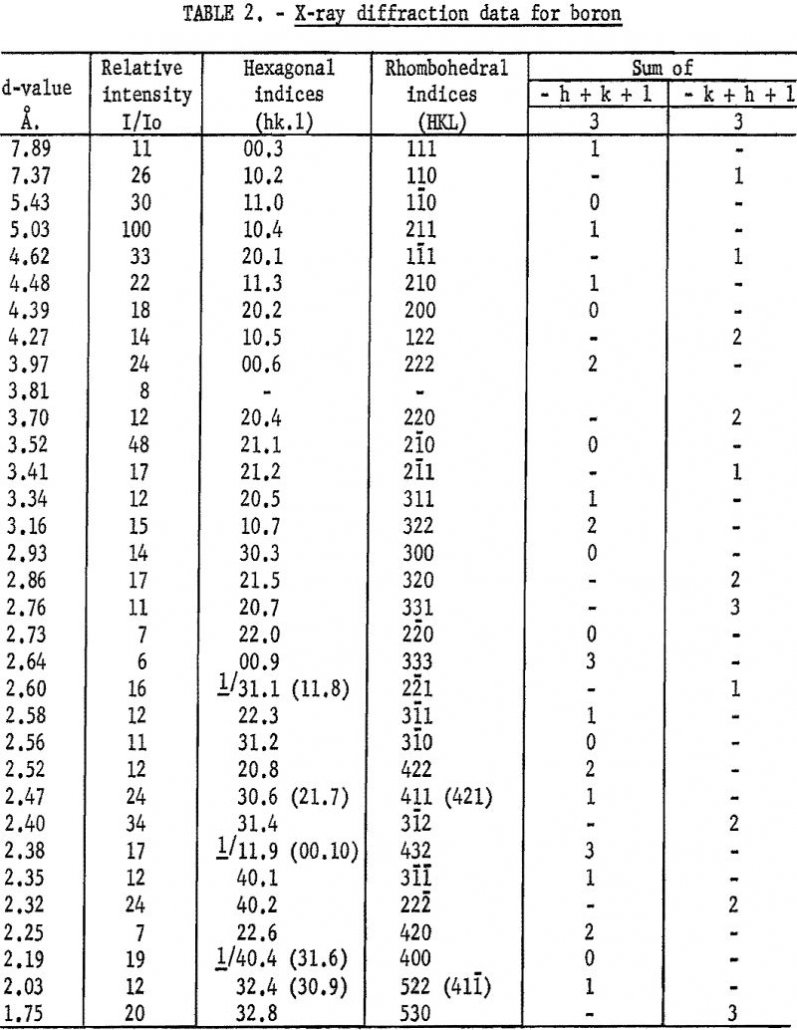
In connection with its continuing studies of the characteristics of alloys and alloying elements, we investigated the crystal structure of fused boron. This Boron Crystallography report describes how the structure of fused boron was found to be rhombohedral by the powder method for crystal-structure determinations by X-ray diffraction. The determinations of the crystal structure of […]
